
If you haven't read the first two parts of this adventure series, I highly recommend you do so to get a full experience of the journey. You can find the previous stories through the following links:
Yogyakarta Adventure #2 - Exploring the Artistic Exhibition of Sonobudoyo Museum
The Sonobudoyo Museum has several entrances: the main entrance facing the city square and the side entrance facing the ex-Loop Station building. I chose to enter from the side because there is something unique here. At the front yard fence of the museum, there is an iconic statue known as "Buto Abang". This statue only features the head and one hand. The hand is designed in such a way that it has become a unique photo spot. Many visitors take photos as if they are in the grip of the giant. Buto Abang itself is one of the well-known mythological figures in Java. In various stories, this creature is often depicted as a giant that is terrifying and often acts as the antagonist in tales

Around this statue, there is also a replica of the "Universal Studios" icon but with the word "Sonobudoyo" instead. Additionally, there is a large billboard providing information about the "Pagelaran Wayang Sonobudoyo/Javanese Performances at Sonobudoyo," held from Tuesday to Sunday with different titles each night from 20:00 to 21:15.
 |  |
|---|
After admiring the Buto Abang statue, I entered the museum courtyard to buy a ticket. The ticket price is very affordable, only Rp10,000 (~0.67 USD). With the ticket in hand, I immediately entered the museum building with its culturally rich entrance.
 |  |
|---|---|
 |  |
Upon entering the main door, I was greeted by various traditional musical instruments, numerous and diverse. Among them were angklung, gamelan, saron, and kendang, all neatly arranged and ready to tell the history of Javanese traditional music to every visitor. I was very interested in trying out these instruments, but unfortunately, visitors are not allowed to touch them. In my opinion, it would be very interesting if there were a special section offering the opportunity to try some of these traditional musical instruments.



Moving to the next room, there were various statues and equipment often used by Hindu worshippers. All of these items were stored in large glass displays. Some of the items I found included statues of the four main Hindu gods: Brahma, Vishnu, Acintya, and Shiva. Additionally, there was a display showing various statues and equipment closely related to Hindu worship.

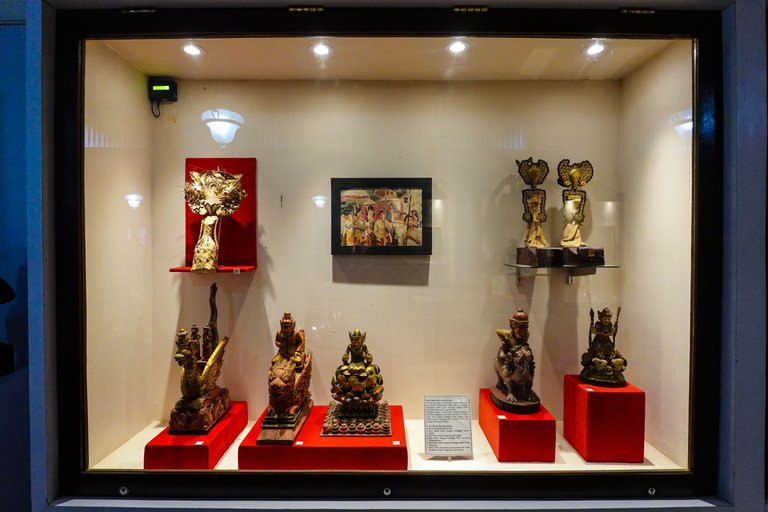
 |  |  |
|---|---|---|
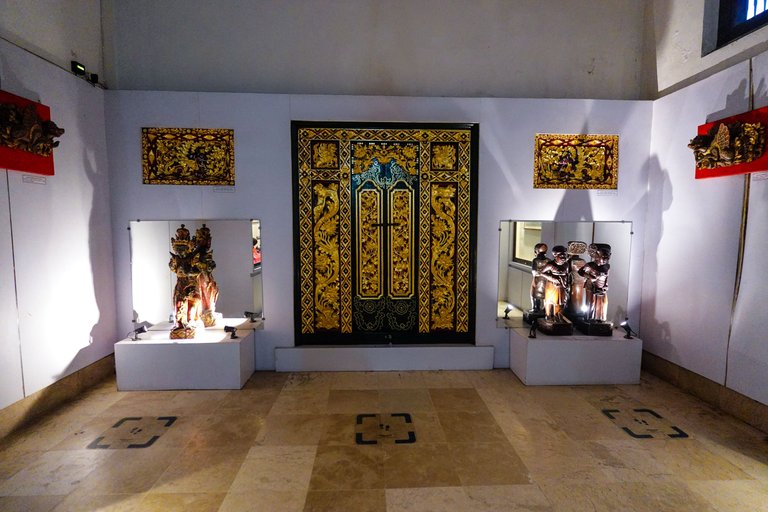 |  |  |
Next, I moved to another building which seemed to be the main building of the museum due to its large size. Upon entering, we found the travel and performance section. In this section, there are various vehicles, both original like palanquins and miniature trains from several eras that once existed in Yogyakarta.


 |  |
|---|---|
 | 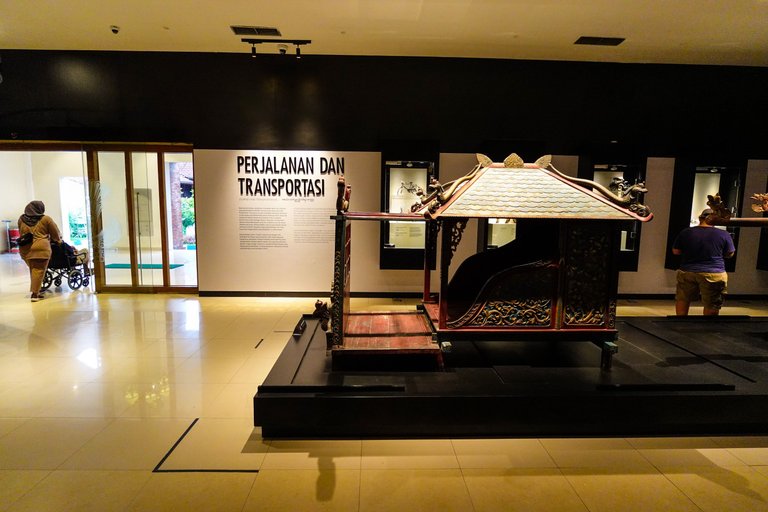 |
After spending time in that section, I moved to the banquet and celebration display section. In my opinion, this is one of the most interesting sections, as there is an audio-visual show directed straight at the dining table and the tableware on it. When the show begins, we can see the engravings on each item clearly accompanied by a narration that has been pre-recorded. The tableware displayed comes from various materials, ranging from wood, porcelain, and even various metals.


 |  |
|---|---|
 |  |
 |  |
|---|
Afterwards, I moved to the second floor, where more art items are displayed. The first thing I found was the performing arts section. One of the most striking features of this section is the mask performance art. There are various masks, from those that look ordinary to quite scary. One of them is the collection of Panji-style masks from Yogyakarta. Panji masks are part of traditional Javanese art with deep meanings and functions. In performing arts, these masks are used in dances that tell classic and epic stories from the Javanese kingdoms. Panji masks usually have smooth and calm facial characteristics, symbolizing the tranquility and wisdom of the Panji character in Javanese folklore. Every detail on these masks, from the carvings to the colors, has rich and profound symbolic meanings.

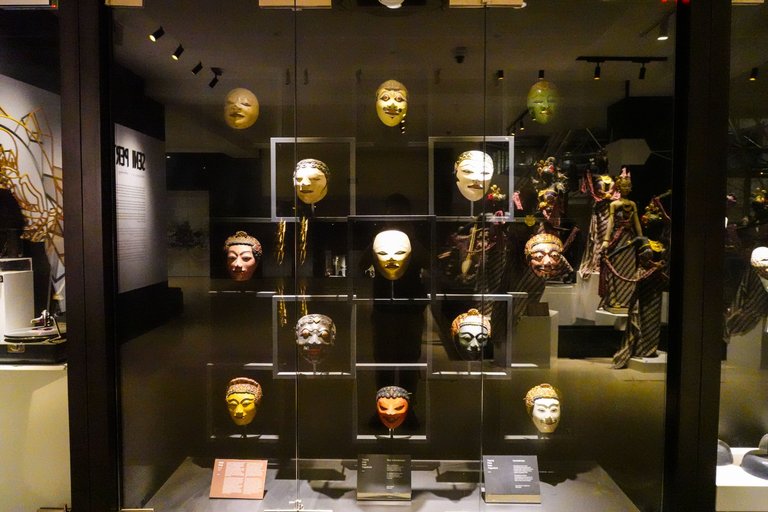
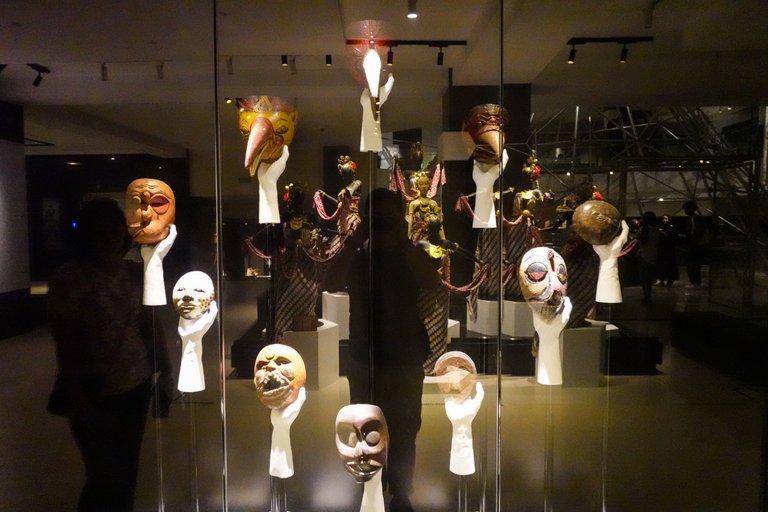
Not far from this showcase, there is another display of masks mounted on iron stands. The expressions on each mask are very diverse. There are more than ten masks in this display, and personally, I found them quite terrifying, especially the masks with bulging eyes. I'm not sure if these masks are still part of the Panji-style collection or if they come from a different collection.


 |  |  |  |  |
|---|---|---|---|---|
 |  |  |  |  |
In the grand tapestry of Yogyakarta's rich cultural heritage, my visit to the Sonobudoyo Museum has unveiled just a fragment of its treasures. From the mesmerizing Panji-style masks to the intricate musical instruments and sacred Hindu artifacts, each display whispered tales of a vibrant past. Yet, this is just the beginning. There are still many stories and pictures from my visit to the Sonobudoyo Museum that I can't wait to share with you next time. Stay tuned for more fascinating tales about the rich cultural heritage during my visit. Until then, keep exploring and embracing the beauty of culture around you!
